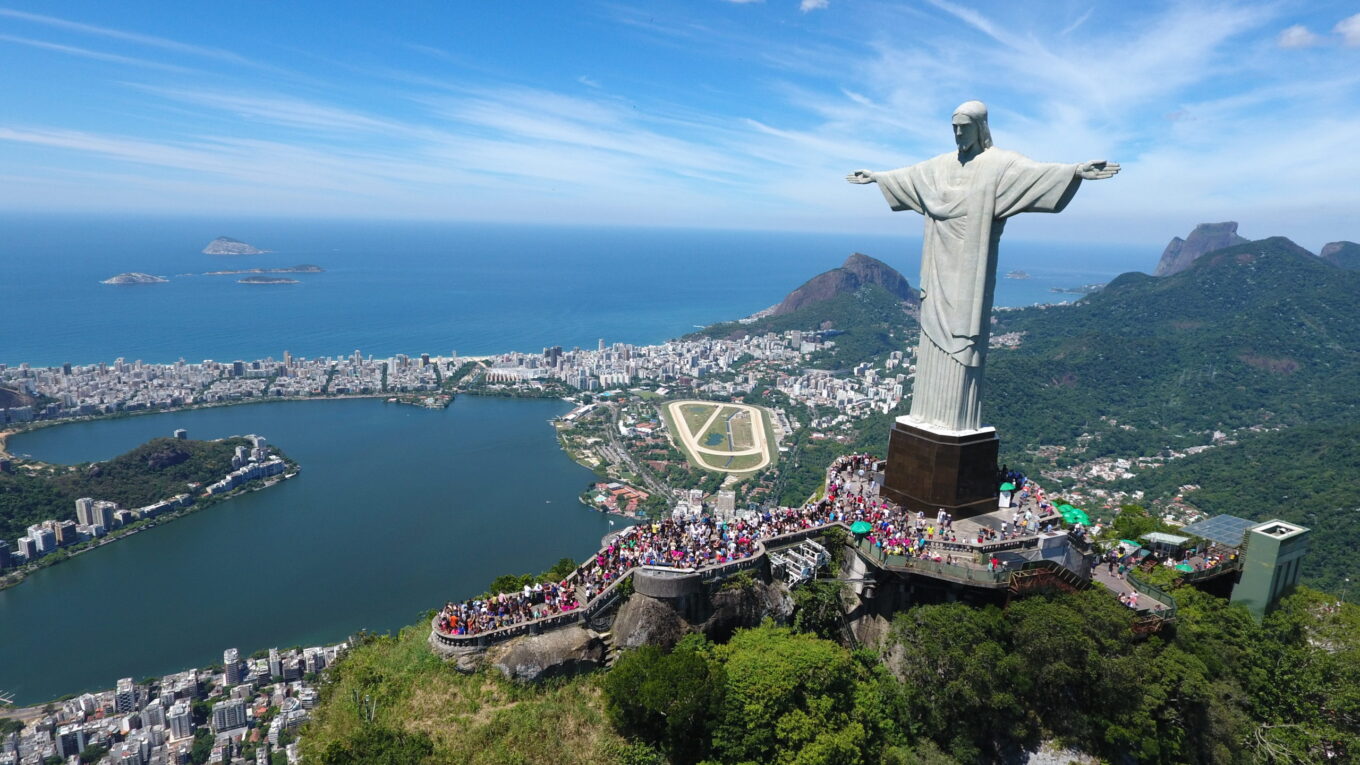Christ the Redeemer: a cultural and spiritual icon of Brazil

Christ the Redeemer stands majestically over the city of Rio de Janeiro, like a silent and powerful guardian. This colossal statue of Jesus Christ, with open arms, has become a symbol not only of the Christian faith, but also of Brazil’s national identity and a global icon of beauty and spirituality. In this article, we’ll explore the history, cultural and spiritual significance, as well as the contemporary importance of Christ the Redeemer.
Cultural and spiritual significance:
For Brazilians, Christ the Redeemer represents not only an expression of their predominant Christian faith, but also a symbol of welcome and inclusion. Its open position, with arms outstretched, seems to invite all who gaze upon it to share its love and compassion. In addition, the statue has become a cultural icon of Brazil, present in films, songs, works of art and in the country’s collective imagination.
Contemporary importance:
Over the decades, Christ the Redeemer has been a focal point for significant events and celebrations, such as papal visits, religious festivities and national holidays. In addition, its presence is a source of inspiration for millions of people around the world, who see it as a symbol of hope, peace and reconciliation. In modern times, Christ the Redeemer also plays an important role in tourism, attracting visitors from all over the globe to witness its grandeur and beauty.
How do I get there?
To get to Christ the Redeemer, there are a few options, depending on where you are in the city of Rio de Janeiro and your personal preferences. Here are some of the most common ways to get there:
First, let me suggest another read you might enjoy.
Corcovado Train:

This is the most classic way to get to Christ the Redeemer. The Corcovado train leaves from the station located in the Cosme Velho neighborhood. The journey is an attraction in itself, as the train passes through the lush Tijuca Forest, offering spectacular views of Rio de Janeiro’s urban and natural landscape. At the top, visitors can enjoy panoramic views of the city and the Christ the Redeemer statue.
Van or Tourist Bus:

Another popular option is to take a van or tourist bus that takes visitors to Christ the Redeemer. These vehicles usually leave from central tourist spots in the city, such as the Lido Square in Copacabana or the Sugarloaf Mountain. This option can be convenient for those who prefer not to use the train or for larger groups.
Trails:

For the more adventurous and fans of outdoor activities, there are also trails that lead to Christ the Redeemer, such as the Parque Lage Trail and the Corcovado Trail. These trails offer a unique experience, allowing visitors to explore the lush nature of the Tijuca National Park while making their way to the top of Corcovado Hill.
Regardless of the means of transportation chosen, it is important to check the opening hours and weather conditions before planning your visit to Christ the Redeemer. In addition, it is advisable to buy tickets in advance, especially during peak season, to avoid queues and ensure a smoother and more enjoyable experience.
In short, Christ the Redeemer emerges not only as an imposing architectural symbol, but also as a tangible representation of the faith and cultural diversity of the Brazilian people. Sitting majestically atop Corcovado Mountain, this statue not only attracts millions of visitors annually, but also serves as a beacon of hope and reconciliation for Rio de Janeiro residents and all who behold its grandeur. Over the decades, Christ the Redeemer transcended its initial purpose as a Christian monument, transforming itself into a global icon of peace, welcome and unity. Thus, its eternal presence on Rio de Janeiro’s skyline continues to inspire and connect people from all backgrounds, reinforcing its importance as a cultural and spiritual treasure not only for Brazil, but for the entire world.
This conclusion summarizes the main points discussed in the article and highlights the lasting relevance of Christ the Redeemer as a monument of historical, cultural and spiritual importance.
you will also like this article
location
Nearest police station







